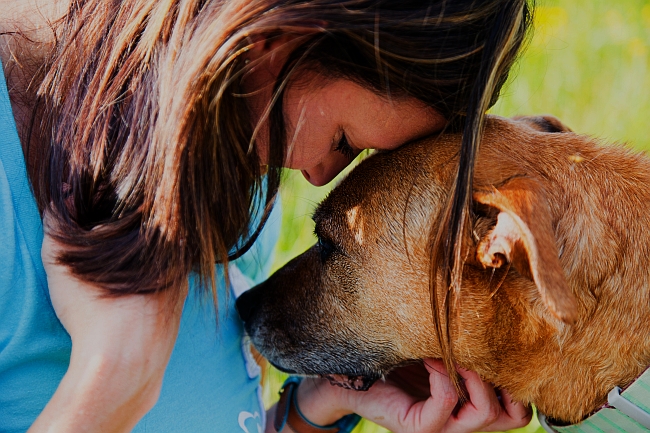
When an animal loses one of the key senses such as sight or the ability to hear, communication can become very challenging. Recognizing that your pet has suffered from hearing loss will necessitate some adjustments to your lifestyle, training and communication methods. Your pet now faces other hazards that would not be an issue for pets with well-functioning ears and the ability to react quickly to warning sounds. Learn how to both cope and communicate with your pets when they become hard of hearing.
Communication Tips
Dogs whistles/ultrasonic sounds: While we may despair of a pet’s ability to hear when we call them or to detect traffic sounds, we may be surprised to see them look up when a dog whistle is blown. These tools sound in frequencies that exceed the detection of the human ear, so it might be possible that your pooch can hear a faint noise when you whistle. Experiment with an ultrasonic sound device and a special dog whistle to see if there is any reaction out of your pup. If it proves successful, this might become your primary way of getting his attention from now on. Sometimes even clapping your hands can prove to be a sound that many unilaterally deaf dogs still pick up in spite of their limited auditory senses. However, should even these attempts to fail to reach your dog, do not be disheartened. Plenty of people find that after the initial struggle to adjust, that having a deaf pet is not that big of a deal.
Vibrations: If you are trying to get your dog’s attention and he is sitting across the room, or is not looking in your direction, you can use vibrations to communicate with them. For example, if you stomp on the floor, or hit the wall that the dog is seated against, he will feel the light rumbling vibrations and would be more likely to look your direction. (Some pet owners find that vibrations not only work with physical motion, but also through scent waves. To coax the dog to the kitchen, remember how keen a dog’s sense of smell is designed to be. Open a can of tuna, or wave some strips of salmon or freshly grilled chicken in the air, so see if the aroma will entice him your way.)
Hand signals: Just as American Sign Language makes clear that vibrant silent communication is possible between humans, a pet owner and her dog can communicate through hand signs and motions. With every spoken command you have been accustomed to saying out loud, start implementing a specific movement or gesture to indicate what you would like your dog to do. In the early stages, working with a professional trainer who has experience with animals that are hard of hearing.
Physical touch: Make your presence known by tapping your dog on the shoulder. Always try to approach your pet from the front, so that he can see you coming and won’t be caught off guard. If you suddenly reach out to your dog from behind his head, or suddenly pet him, some pup can act out when then are startled (particularly if they are already on edge because they can’t hear). Avoid getting snapped at, or frightening your pup by only reaching out toward him within his line of vision.
Patience: Remember that the loss of hearing can be disorienting to a dog, causing him to feel vulnerable, uneasy or stressed. Be careful not to ever communicate any frustration to him, either physically or through gesticulating. Instead, try to be intentional about petting your dog more often, and taking the time to play games and show him affection wherever possible.
Safety Tips
- Always use a leash. Most public places insist that dogs be kept on leashes, but many pet parents hold to those rules loosely when at the beach or visiting the park. If your dog has impaired hearing, you must be prepared to have him stay on a leash at all times. Deaf pets cannot hear an approaching vehicle, strange animals, or calls from their owner, which could present a real problem if they wander off without a leash.
- Flash lights. When trying to communicate with your pet at night, use a flashlight or a head lamp to get their attention. When the dog sees the light, he might come running (and barking) toward you. Using a light can also work well in day time if you are trying to get a dog or cat’s attention, by simply flashing the light their direction until they look toward you.
- Get a second dog. Most animals thrive when they have a friend to keep them company and help them stay active. If the deaf pet is trotting around with another dog who can hear just fine, then whenever you call the pups, they will likely both come running. This is helpful for meal time, or when strangers come to the door (both dogs will charge ahead, even if the deaf one is just following in kind).

